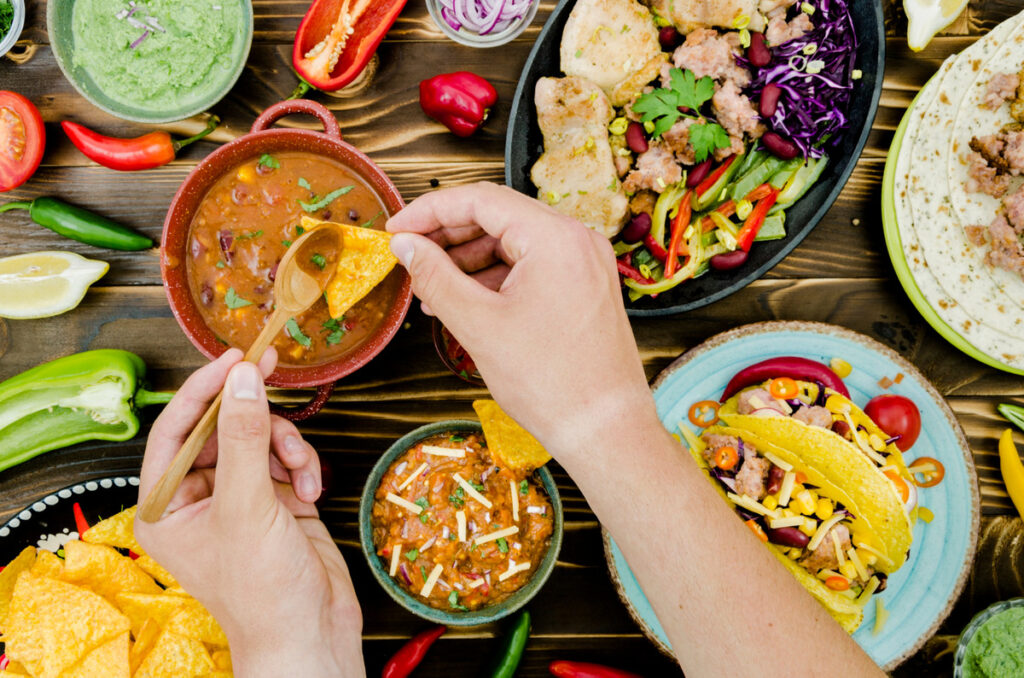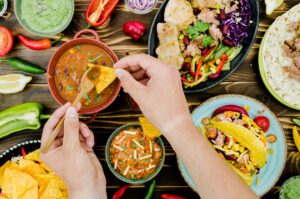Mexican food for diabetics can be both delicious and supportive of healthy blood sugar management when prepared with mindful ingredient choices and cooking techniques.
Traditional Mexican cuisine offers a variety of nutrient-rich foods, from beans and vegetables to lean proteins and healthy fats.
By making a few strategic adjustments, you can enjoy vibrant, authentic flavors without spiking your glucose levels.
This guide explores how to adapt Mexican dishes for diabetes-friendly meals that are satisfying and flavorful.
Mexican Food for Diabetics
Adapting Mexican food for diabetics starts with understanding how different ingredients impact blood sugar.
Opting for high-fiber carbohydrates, lean proteins, and unsaturated fats can help create balanced meals.
Focus on portion control, as even healthy ingredients can contribute to glucose spikes if consumed in large amounts.
The goal is to preserve the cultural authenticity of the cuisine while prioritizing nutrient density and glycemic control.
Smart Carbohydrate Choices in Mexican Cuisine
Carbohydrates are a central part of many Mexican dishes, but not all carbs are equal.
Replacing refined flour tortillas with whole-grain or corn tortillas can provide more fiber and a lower glycemic load.
Beans, lentils, and other legumes are excellent alternatives to white rice, offering protein and complex carbs that digest more slowly.
Vegetables like zucchini, bell peppers, and leafy greens can bulk up dishes while keeping carbs in check.
For example, swapping traditional rice for cauliflower rice in burrito bowls can significantly reduce the carbohydrate content.
Always be mindful of portion sizes to maintain blood sugar stability.
Lean Proteins for Blood Sugar Balance
Protein helps slow the absorption of carbohydrates and keeps you feeling full longer.
In Mexican cuisine, lean options include skinless chicken, turkey, fish, and seafood.
Grilled shrimp tacos on corn tortillas with fresh salsa make a satisfying, diabetes-friendly meal.
Eggs, egg whites, and plant-based proteins like tofu can also be used in breakfast burritos or veggie fajitas.
Avoid processed meats like chorizo that are high in saturated fat and sodium, as they can negatively impact heart health, which is especially important for people with diabetes.
When dining out, request grilled instead of fried meats to reduce calorie and fat content.
Healthy Fats That Enhance Flavor
Healthy fats not only improve flavor but also support satiety and nutrient absorption.
Avocado is a staple in Mexican cuisine and offers monounsaturated fats beneficial for heart health.
A small serving of guacamole can be a great addition to tacos or salads.
Use olive oil instead of lard when cooking beans or sautéing vegetables.
Seeds like pumpkin or chia can be sprinkled over salads, soups, or stews for added texture and nutrition.
Moderation is key, as fats are calorie-dense even when healthy.
Flavorful and Low-Sodium Seasonings
Seasonings and herbs are essential for enhancing taste without adding excess sodium.
Fresh cilantro, lime juice, jalapeños, and cumin are traditional flavors that bring brightness to dishes.
Salsas made from fresh tomatoes, onions, and chili peppers can replace heavier sauces.
Avoid bottled sauces or seasoning packets that may contain added sugars or high sodium levels.
Experimenting with fresh herbs and spices helps maintain flavor variety while supporting a healthier diet.
Tips for Dining Out at Mexican Restaurants with Diabetes
Eating out requires extra attention to ingredient choices and portion sizes.
Start meals with a side salad instead of chips and queso.
Choose grilled or baked proteins and request steamed vegetables as sides.
Ask for tortillas and rice in smaller portions or share them to reduce carb intake.
Request sauces and dressings on the side to control sodium and sugar content.
Opt for water, unsweetened tea, or sparkling water with lime instead of sugary beverages.
Common Mistakes to Avoid with Mexican Food
One of the most common mistakes is overindulging in fried foods like chimichangas, churros, or tortilla chips.
These items are calorie-dense and can rapidly raise blood sugar.
Another pitfall is relying on cheese-heavy dishes loaded with saturated fat.
Be cautious with desserts and sweet drinks, which can contain hidden sugars.
Overeating large portions, even of healthy dishes, can still cause glucose spikes.
Awareness of these mistakes helps make dining on Mexican cuisine both enjoyable and health-conscious.
How GlycoFortin Can Support Blood Sugar Control with a Balanced Diet
Incorporating balanced Mexican meals into a diabetes-friendly diet is an excellent way to enjoy flavorful food while managing health.
For additional support, GlycoFortin is a natural supplement designed to promote healthy blood sugar levels.
Its formula combines chromium, guaraná, green tea, Panax ginseng, Gymnema Sylvestre, maca root, and grape seed extract to enhance insulin sensitivity and reduce glucose absorption.
These ingredients also combat inflammation and provide steady energy throughout the day.
GlycoFortin is non-GMO, free from artificial stimulants, and produced in FDA-registered facilities.
When used alongside balanced meals, GlycoFortin can help reinforce healthy blood sugar patterns and support long-term metabolic health.
To learn more about GlycoFortin and how it can complement your diabetes-friendly lifestyle, visit the official GlycoFortin website today.










